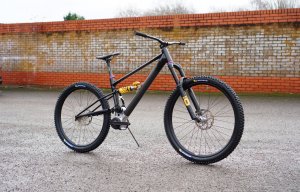
Thermoplastic benefits for E-bikes
At this week’s Composites Europe show in Essen, in a world first, a carbon fibre composite cycle frame has been woven entirely by a purpose built patented robot, guaranteeing the highest level of precision in design and removing any scope for error for the first time. In conventional cycle frame building, racing bikes are meticulously laid-up by hand, using hundreds of carbon mat layers but the Impec cycle frame from Swiss company BMc, therefore, sets a new benchmark in bot
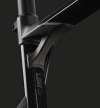
15th September 2010
Innovation in Textiles
|
Essen
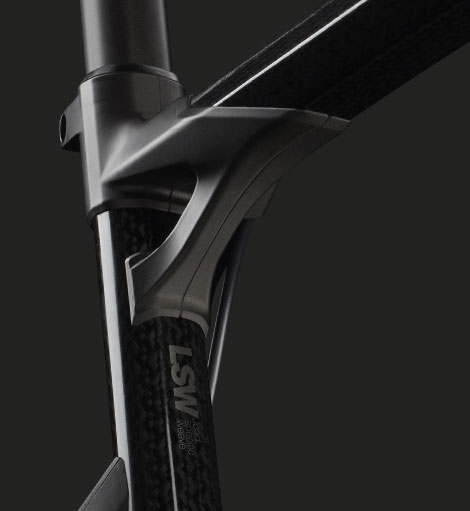 At this week’s Composites Europe show in Essen, in a world first, a carbon fibre composite cycle frame has been woven entirely by a purpose built patented robot, guaranteeing the highest level of precision in design and removing any scope for error for the first time.
At this week’s Composites Europe show in Essen, in a world first, a carbon fibre composite cycle frame has been woven entirely by a purpose built patented robot, guaranteeing the highest level of precision in design and removing any scope for error for the first time.
In conventional cycle frame building, racing bikes are meticulously laid-up by hand, using hundreds of carbon mat layers but the Impec cycle frame from Swiss company BMc, therefore, sets a new benchmark in both the cycling and weaving technology industries and was unveiled at this week’s Composites Europe show in Essen, Germany. Here we look at the company and the man behind the vision..
A man with a vision. To establish a competitive frame production facility in Switzerland. An integrated industrial manufacturing process to satisfy the most exacting quality requirements. A highly efficient carbon frame which is not laminated, but instead made from load specific woven tubes. A revolutionary half-shell system that connects these tubes with ultimate strength. A world champion who tests the bike and instantly declares it suitable for racing. A utopia?
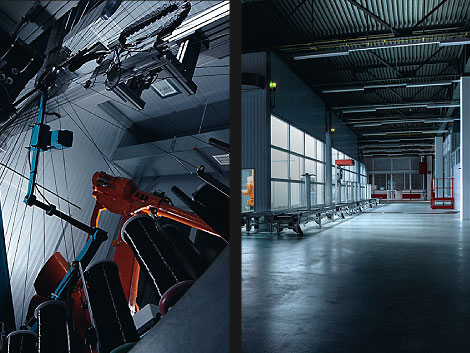 When Andy Rihs gets on his bike, not only is it good for his fitness but most of all for his businesses as well. Sitting in the bike saddle is where he does his thinking. It’s where he “gets into the flow”, where the contradictions are re- solved, horizons open up and things can be thought that previously were unthinkable..
When Andy Rihs gets on his bike, not only is it good for his fitness but most of all for his businesses as well. Sitting in the bike saddle is where he does his thinking. It’s where he “gets into the flow”, where the contradictions are re- solved, horizons open up and things can be thought that previously were unthinkable..
This love story officially begins in early 2001 when Andy Rihs, the boss at hearing systems manufacturer, Phonak, and bike producer, BMc, announced their marriage. At this point in time, BMc was mostly constructing mountain bikes but that was about to change fast. The following year, Andy Rihs’ Phonak racing Team started the Tour de France on BMc racing machines. The riders in their green-and-yellow were pedalling to help people’s hearing. “We race for better hearing” was the message they took out across the world.
The strategy bore fruit. Phonak advanced not only to become the biggest and most innovative but also the best known manufacturer of hearing systems in the world - and in the world of road racing BMc became a brand that stood out with its highly independent frame design and its use of innovation.
But Andy Rihs had bigger ideas when he got into the bike business. He doesn't believe in doing anything by halves. Now what was driving him most of all as he bowled along with his bike purring under him is the question of why this ingenious invention - which does so much to propel him forward in his thinking - has still not arrived in the modern age? He was unable to understand why a high-tech material such as carbon was always processed using low-tech methods. And nor did he think that the production of bicycle frames fit for the global market necessarily had to be based in East Asia. And that's when he began to get an idea of where the journey might take him...
Andy Rihs covered another lap on his team machine and then decided: that's what we will do. We will set a true industrial standard for the construction of carbon frames. We will develop all the technologies we need right through to series production. We will do all of it in Switzerland - with Swiss thoroughness and precision. And when we have finished we will be the first manufacturer in the world able to offer our customers an absolutely faultless carbon frame that satisfies the highest demands. in short, we'll build the Impec.
We wanted to put the frame of the future onto the wheels. We were prepared to question everything. We knew that we had to rethink virtually everything and do some things differently if we were actually to do them better..
Carbon was used as the no 1 material right from the start in the development of the Impec. As a result, the traditional laminating process where composite mats are bonded together by hand was basically out of the question. After all, the process comes nowhere near to exploiting the potential of the material. And we absolutely wanted to make use of this potential in the development of the Impec.
After almost four years of development, the moment had finally arrived. The Gordian knot was cut clean through the middle. We had finally got to grips with the material and developed two technologies that were of vital importance for the Impec. Both totally new, totally different and – we’re convinced – totally better.
Impec Technology no 1 is the Load Specific Weave process or LSW for short. At this stage of production, each individual tube of the Impec frame is made-to-measure seamlessly and with absolute precision. On the Impec, the entire frame is optimized to its specific load. Each of its tubes does a different job and therefore has a different design.
Impec Technology no 2 is the Shell node concept or SNC for short. The frame joints of the Impec each consist of two half-shells which are bonded with the frame tubes in the final assembly with absolute precision. These shells are what is actually revolutionary about the Impec frame and set new standards when it comes to design. it was only possible to realize the concept by means of a highly rigid composite compound material which can be processed under absolute control using an injection moulding process.
As a result of combining LSW and SNC, we have achieved a production quality with the Impec that allows us to vouch for the inner perfection of the frame as well. That definitely puts the Impec ahead of its time by a length.
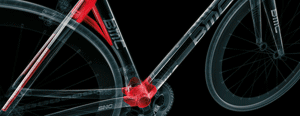 How do you achieve perfection? This question was the overriding priority for the specification we had developed for the Impec. Finding the answer took a phenomenal amount of work and we have to admit that at first there was no sign of anything revolutionary..
How do you achieve perfection? This question was the overriding priority for the specification we had developed for the Impec. Finding the answer took a phenomenal amount of work and we have to admit that at first there was no sign of anything revolutionary..
The recipe is well-known: you take only the best of everything – the best location, the best engineers, the best materials, the best production methods, the best measurement techniques, the best test riders – and put them to work. At least that’s the theory.
But the practice mainly consists of sweating, mulling over, failing, and falling out, having another go, improving, refining and so on and so forth. The development of the Impec was no exception. None of that sounds particularly revolutionary – and yet the result of several years of development work is so demonstrably different to all the rest that you can’t even call it evolution.
One of our first exercises incidentally was to bring the good old diamond frame design into the digital age. Using the very latest in production methods and a host of carbon technologies that up until then still hadn’t seen the light of day.
Establishing how we wanted to construct the tubes was relatively quick. Their carbon structures were to be seamlessly woven, from a machine as traditionally used for producing steel cable. So the no 1 basic technology had been found; however, everything else, such as processing the carbon fibres on such a machine, was completely new territory.
And yet when it came to the frame joints for the Impec the search for the philosophers’ stone turned out to be much more difficult. it was not just the issue of the material, but also the design of the nodal points, that were the longest outstanding questions raised by the project. in the end, though, we arrived at a solution with the Shell node concept which worked absolutely flawlessly with our specification. Error sources? Negative. The industrial revolution Mk 2 had triumphed right down the line – finally, nothing else now stood in the way of building the Impec.
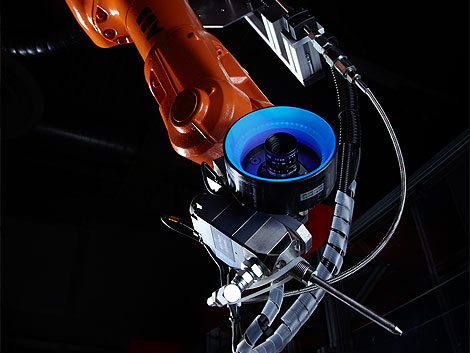 We Swiss are fortunate. We grow up against the backdrop and even in the midst of this fantastically beautiful picture book scenery of the Alps. Maybe that’s why we think that everything in the world should be just as perfect. It certainly helped in the development of the Impec.
We Swiss are fortunate. We grow up against the backdrop and even in the midst of this fantastically beautiful picture book scenery of the Alps. Maybe that’s why we think that everything in the world should be just as perfect. It certainly helped in the development of the Impec.
When you dream – as we at BMc did – of a faultless carbon frame, you very soon arrive at a basic understanding: the first imperative always is to have absolute control over the process. Only when each individual stage of production is capable of being clearly understood, monitored and at the end faultlessly repeated can the perfection in series production we are striving for be realized. From this understanding to Switzerland becoming the home of the Impec was then just a relatively short step.
We Swiss have had a particular talent since time immemorial for the ingenious things in life. not that we claim to have invented everything. But we have taken one issue or problem or another and by applying Swiss precision have got to the bottom of it. Whether it’s constructing tunnels and bridges, precision mechanics, measuring systems or plant engineering, we always try to be one of the best.
Today Switzerland is a high-tech business location par excellence. Countless small and medium-sized companies are working on obviously cutting-edge technologies and applications. Ultimately, this specific infrastructure was key to our decision to go against the trend and choose Switzerland as the home of the Impec.
And Switzerland has another inestimable advantage. It is a country of immediate access. So accessible that in most cases it’s no effort to get hold of the nearest process specialists, cnc programmers and machining engineers. And we have no intention of ever running out of ideas of how we can make the world that little bit more perfect.
Source: BMc
Images courtesy of BMc.

Business intelligence for the fibre, textiles and apparel industries: technologies, innovations, markets, investments, trade policy, sourcing, strategy...
Find out more